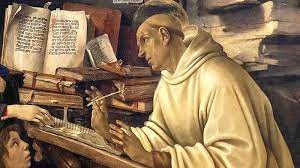There have been situations in the past, however, when the youngest member of the family had preference. The technical term is ultimogeniture, and was also known as junior right or postremogeniture.
The Bible notes that Isaac, Jacob, and David were youngest sons, as was Joseph with his coat of many colors. Hesiod's Theogony describes both Cronus and Zeus as the youngest of their respective families. There is nothing in Hebrew or Greek law that suggests ultimogeniture was practiced, but they saw some significance in being the youngest.
More recently, in Medieval England, ancient English boroughs sometimes practiced ultimogeniture. It was found in rural areas with Saxon citizens as opposed to Norman French-oriented areas where primogeniture was practiced.
No legal writing exists that explains the benefit of ultimogeniture, but we can conjecture, and that leads me to the picture I've included here. The Amish practice ultimogeniture. As each son reaches an age where he wants to start his own family and farm, the question arises of what he should do. His father, however, is still hale enough to farm, and is not going to turn his own farm over to one of his children. Arrangements are made to find land for the son. Elder sons might even go work for someone else or take on another trade. By the time the youngest son is ready to have a family and farm, the father is likely now old enough to retire and turn the farm over. (Handled properly, this can also avoid estate taxes.)
That might explain some of the historical reasoning for ultimogeniture: the simple fact that the father maintains the estate for as long as he can, the elder sons cannot wait around for him to die, and so they go off to find their own careers, and ultimately the youngest is still around when the father is ready to retire. In my own family history, a house that was owned from 1837 until the 1960s was taken over by the youngest person in each succeeding generation once the father died; the widow stayed in the home while the youngest son raised his own family there.
Ultimogeniture—which was all about transferring property from one generation to the next—did not preclude partible inheritance, the dividing of the land (making sure that elder sons got something as well). Partible inheritance was not welcome in the feudal system, where the lord wanted to maintain control over an intact estate. There was a practice, however, that allowed transfer of land rights that was not quite feudal and was not based on genealogy. Next time, I'll explain copyhold.




























